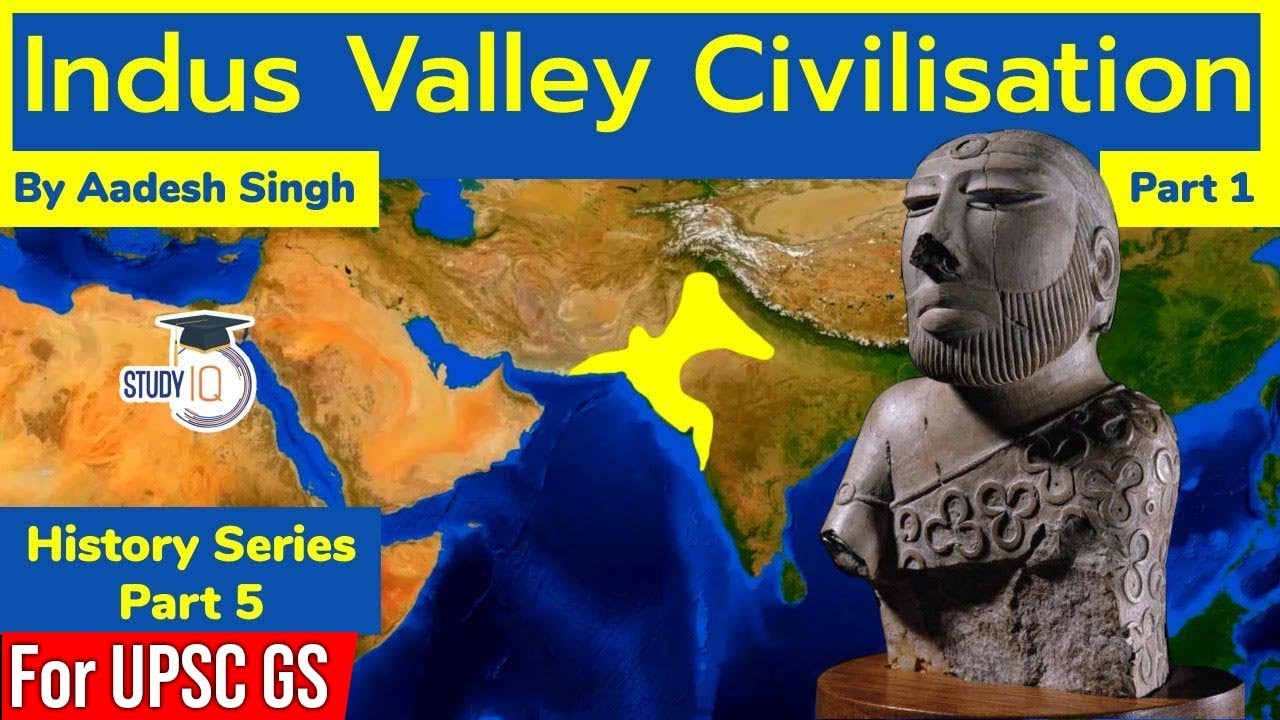Mohenjo Daro 101 | National Geographic
Summary
TLDRMohenjo-daro, an ancient city in Pakistan's Indus River Valley, was a significant urban center of the Indus civilization, built around 2500 BC. Spanning nearly 500 acres, it featured advanced water systems, including the Great Bath and 700 wells, showcasing a possible egalitarian society without traditional places of worship or governance. The city's decline after 600 years remains a mystery, possibly due to cultural shifts or changes in the river's course. Despite extensive excavations since 1911, many of Mohenjo-daro's secrets still lie buried, inviting further exploration.
Takeaways
- 🏙️ Mohenjo-daro is one of the first urban centers in human history, located in the Indus River Valley in southern Pakistan.
- 🏺 It is the largest and best-preserved city of the Indus civilization, the earliest known civilization of the Indian subcontinent.
- 🏛 Mohenjo-daro was built around 2500 BC, coinciding with the construction of the Great Pyramids of Egypt.
- 📏 The city covers an impressive surface area of nearly 500 acres, which was an extraordinary size for its time.
- 👑 Archaeologists believe Mohenjo-daro may have been a seat of power due to its grand scale.
- 🏰 The city was divided into two main districts: the Citadel, which housed exceptional monuments, and the Lower Town.
- 🛁 The Great Bath in the Citadel is a 900 square foot tank, supplied by the Indus River, showcasing the city's advanced water system.
- 🚰 Mohenjo-daro had a sophisticated water management system, including baths, toilets, sewage systems, and 700 wells.
- 🏛 Unlike contemporaneous civilizations, Mohenjo-daro lacks places of worship or governance, suggesting a society not centered on state interests.
- 🌐 The Lower Town's grid layout and egalitarian structure suggest a relatively equal class system.
- 🔍 The city's collapse after approximately 600 years remains a mystery, possibly due to cultural changes or alterations in the river's path.
- 🗺️ Archaeological excavations since 1911 have revealed many clues about Mohenjo-daro, but the city still holds secrets to be discovered.
Q & A
What is the significance of Mohenjo-Daro in the context of human history?
-Mohenjo-Daro is significant as one of the first urban centers in human history and the largest and best-preserved city of the Indus civilization, the earliest known civilization of the Indian subcontinent.
When was Mohenjo-Daro built and what is its relation to the construction of the Great Pyramids of Egypt?
-Mohenjo-Daro was built around 2500 BC, which is approximately the same time the Great Pyramids were being constructed in Egypt.
What is the estimated surface area of Mohenjo-Daro?
-The surface area of Mohenjo-Daro is nearly 500 acres, which was an incredible size for a city during its time period.
Why do archaeologists believe Mohenjo-Daro may have been a seat of power for the Indus civilization?
-Archaeologists believe Mohenjo-Daro may have been a seat of power due to its grand scale and the presence of exceptional monuments within the city.
How was Mohenjo-Daro divided into different districts and what are their names?
-Mohenjo-Daro was divided into two districts: the Citadel, which contained the city's exceptional monuments, and the Lower Town, which was home to a large portion of the population.
What is the Great Bath and how was it fed?
-The Great Bath is a 900 square foot tank in the Citadel of Mohenjo-Daro, which was fed by water from the Indus River.
What can be inferred about the society of Mohenjo-Daro from the absence of places of worship or governance?
-The absence of places of worship or governance, such as palaces, royal tombs, or temples, may indicate that Mohenjo-Daro's society was not built around state interests like those of Egyptian and Mesopotamian societies at the time.
How does the layout of the Lower Town in Mohenjo-Daro reflect its societal structure?
-The Lower Town's grid system layout and intricate water system, which was home to between 20,000 to 40,000 people, may demonstrate Mohenjo-Daro's relatively egalitarian societal structure.
Why did Mohenjo-Daro collapse after approximately 600 years, and what are the potential causes?
-The exact reason for Mohenjo-Daro's collapse is not known, but potential causes could include a change within the culture or a shift in the path of the Indus River, which may have led to a loss of its crucial water source.
When did archaeologists first visit Mohenjo-Daro and what has been the outcome of the subsequent excavations?
-Archaeologists first visited Mohenjo-Daro in 1911, nearly 4,000 years after the city fell into ruin. The ensuing decades of excavations have unearthed countless clues that tell the tale of Mohenjo-Daro, though it still holds secrets to be discovered.
What is unique about Mohenjo-Daro's water system compared to other urban areas of its time?
-Mohenjo-Daro had a sophisticated water system that included baths and toilets in houses, an elaborate sewage system, fresh water, and 700 wells throughout the city, which was unique compared to other urban areas of its time.
Outlines

Cette section est réservée aux utilisateurs payants. Améliorez votre compte pour accéder à cette section.
Améliorer maintenantMindmap

Cette section est réservée aux utilisateurs payants. Améliorez votre compte pour accéder à cette section.
Améliorer maintenantKeywords

Cette section est réservée aux utilisateurs payants. Améliorez votre compte pour accéder à cette section.
Améliorer maintenantHighlights

Cette section est réservée aux utilisateurs payants. Améliorez votre compte pour accéder à cette section.
Améliorer maintenantTranscripts

Cette section est réservée aux utilisateurs payants. Améliorez votre compte pour accéder à cette section.
Améliorer maintenantVoir Plus de Vidéos Connexes

Indus Valley Civilization Part 1 - Ancient India History for UPSC | Harappa Civilization

Rise and Fall of Indus Valley Civilization

Documentary # 16: Indus Valley Civilization | A Short Documentary

Layout of The City - Mohenjo-Daro - History || Extramarks

PERADABAN SUNGAI INDUS : Mahenjo Daro dan Harappa

Archaeological Ruins at Moenjodaro (UNESCO/NHK)
5.0 / 5 (0 votes)
